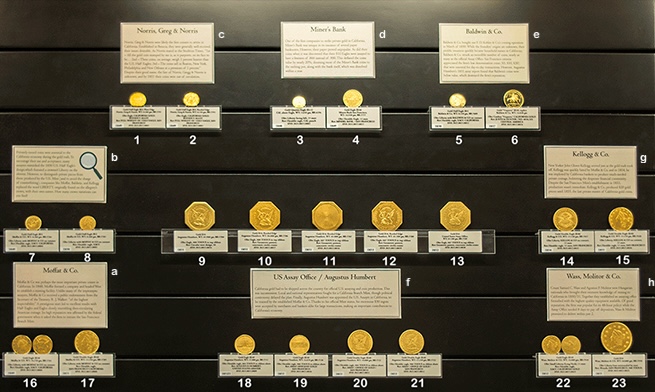
INTRODUCTION
In 1848, John A. Sutter established Sutter’s Fort in New Helvetia, California. Needing a sawmill, he enlisted James Marshall to find a site along the American
River. On January 24, while examining the location, Marshall noticed a little yellow flash. Gold! By spring, almost every able-bodied man left San Francisco,
heading for the gold fields. Local newspapers closed for lack of employees and readers! On December 5, 1848, President James Polk announced gold had
been found in California. The Gold Rush was on!
Over the next decade, hundreds of thousands of people traveled to California from around the world hoping to make their fortune. Some journeyed from the east, around the tip of South America, a trip of nearly 15,000 miles, taking up to 4 months. The quicker route was to Panama, then 60 miles across the isthmus and onto another ship; both voyages were hazardous. The longest choice was overland, across the Mississippi, Great Plains and Rocky Mountains. Though less dangerous, 6 months by wagon train was no picnic.
Did You Know?
The largest mass migration in U.S. history, over 300,000 people followed the California Gold Rush.
$10 million of gold was found in 1849, $41 million in 1850, $75 million in 1851, and $81 million in 1852.
The abundance of miners, supply shortages, and remote locations led to staggering inflation. In today’s money, a single egg might be $25, coffee sold for $100 per pound, and new boots… $2500! Not surprisingly, more fortunes were made by merchants than miners.
Click on the items in the case image below for an enhanced view
|
AUDIO COMPANIONS
|
The rapid influx of people between 1849 and 1850 created a shortage of coins in California. This shortage was filled by private minters and assayers who converted the miners’ gold into ingots and private gold coins. These assayers produced gold pieces in denominations ranging from $5 to the massive $50, 2.5
ounce “slugs.” While predominately circulated from 1849 to 1851, Wass, Molitor & Co. continued to strike slugs as late as 1855. The early pieces were largely melted down when the Treasury Department contracted Moffat & Company to work with U.S. Mint Assayer, Augustus Humbert. He later opened the U.S. Assay office, which acted as a temporary US branch mint until the San Francisco Mint opened in 1854.
Newly mined gold was transported to San Francisco. Tens of millions of dollars in gold ingots, coins, nuggets and dust were shipped each year around the globe, mostly to New York City and London. A large proportion was converted into coins at the Philadelphia Mint.
